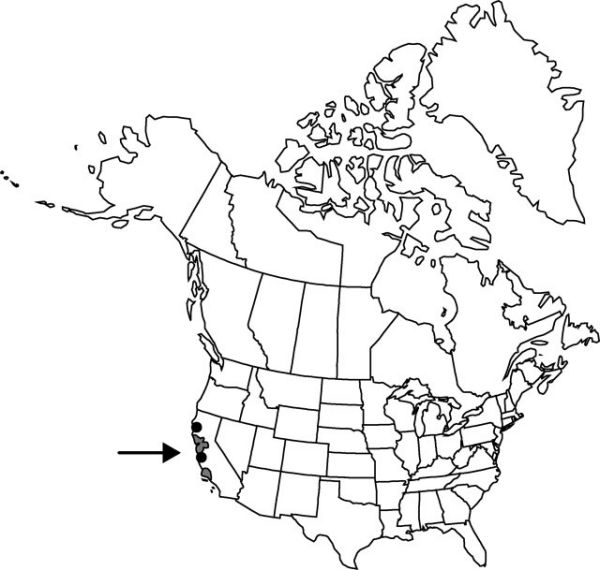Allium triquetrum
Sp. Pl. 1: 300. 1753.
Bulbs 5–20+, not clustered on stout primary rhizome, rhizomes absent, increase bulbs absent or ± equaling parent bulbs, never appearing as basal cluster, ovoid, 1–2 × 1–2 cm; outer coats enclosing renewal bulbs, ± translucent, yellow-brown, obscurely cellular-reticulate, thin, membranous, meshes delicate, cells vertically elongate, contorted, without fibers; inner coats white, cells obscure, quadrate, or not visible. Leaves persistent, green at anthesis, 2–3, basally sheathing, sheaths not extending much above soil surface; blade solid, flat, not falcate, ± carinate, 15–50 cm × 3–15 mm, margins entire. Scape persistent, clustered, 1–4, erect, solid, sharply 3-angled, 10–40 cm × 1–10 mm. Umbel persistent, lax, loose, 3–15-flowered, ± 1-sided, bulbils unknown; spathe bracts persistent, 1–2, 3-veined, narrowly lanceolate, ± equal, apex acute. Flowers becoming pendent, campanulate, 10–18 mm; tepals erect to spreading, white with prominent green midrib, lanceolate, ± equal, becoming membranous in fruit, margins entire, apex acute; stamens included; anthers yellow; pollen yellow; ovary crestless; style linear, ± equaling stamens; stigma capitate, scarcely thickened, unlobed; pedicel 15–25 mm. Seeds appendaged with evident caruncle. Seed coat dull; cells minutely roughened. 2n = 18.
Phenology: Flowering Mar–Apr.
Habitat: Disturbed sites
Elevation: 0–100 m
Distribution

Introduced; Calif., sw Europe.
Discussion
Allium triquetrum is a garden escape, introduced from southwestern Europe, and is potentially a noxious weed.
Selected References
None.